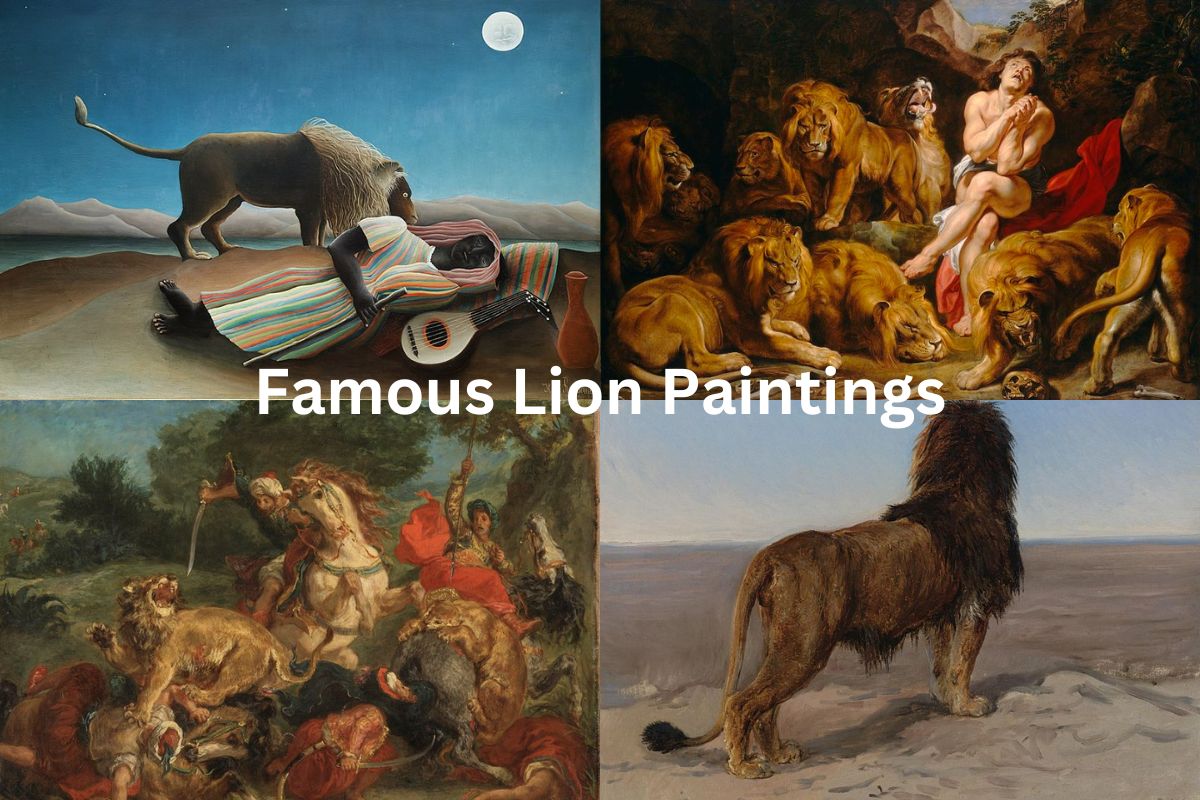Lions have been a popular subject of paintings throughout history, appearing in various styles and contexts. These majestic creatures have captured the imagination of artists and art lovers alike, inspiring some of the most iconic and memorable works of art.
From ancient Egyptian art to contemporary paintings, lions have been portrayed in many different ways, often symbolizing strength, power, and courage.
In this list, we will explore some of the most famous lion paintings from different eras and regions. These works of art showcase the beauty, ferocity, and grace of these magnificent creatures, while also offering a glimpse into the artistic vision and techniques of their creators.
Famous Lion Paintings
1. Daniel in the Lions’ Den – Peter Paul Rubens
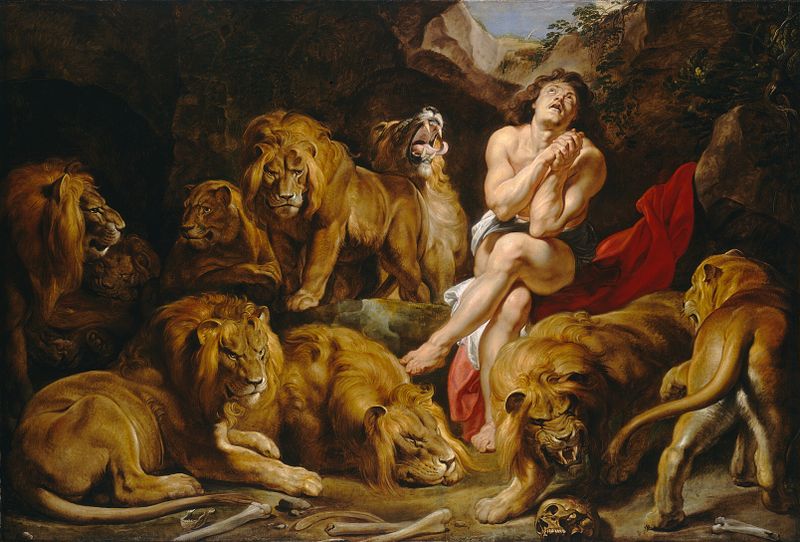
“Daniel in the Lions’ Den” is a painting by the Flemish artist Peter Paul Rubens, completed in 1615. The painting depicts the biblical story of Daniel, who was thrown into a den of lions by King Darius for his refusal to stop praying to God.
In the painting, Daniel is shown kneeling and praying to God, while the lions approach him, their jaws open and teeth bared. The light falls on Daniel, illuminating his peaceful face and highlighting his faith and courage in the face of danger.
Also Read: Famous Lion Statues
The painting is notable for its dramatic composition, with the lions arranged in a circular pattern around Daniel, and for its use of vibrant colors and richly detailed textures.
Rubens was one of the most important and influential painters of the Baroque period, known for his dramatic and dynamic style, and his mastery of color and composition.
“Daniel in the Lions’ Den” is considered one of his most impressive works, and a testament to his ability to capture the emotional intensity and spiritual power of religious subjects.
Today, the painting is part of the collection of the National Gallery of Art in Washington D.C. and remains a celebrated masterpiece of Baroque art.
2. The Sleeping Gypsy – Henri Rousseau
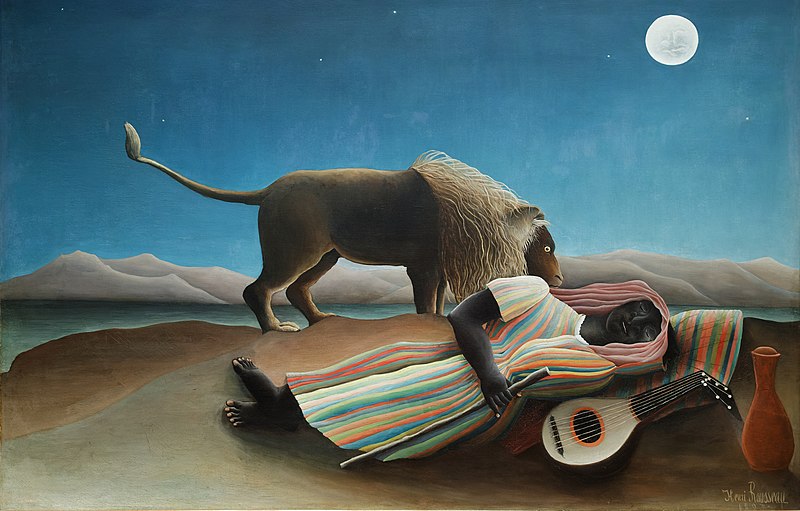
“The Sleeping Gypsy” is a painting by French artist Henri Rousseau, completed in 1897. The painting depicts a sleeping woman in the desert, with a lion standing nearby, staring at her.
The painting is notable for its dreamlike quality, with a sense of mystery and wonder that invites the viewer to imagine the story behind the image. The woman is dressed in exotic clothing, with a mandolin lying beside her, suggesting that she is a traveler or musician. The lion, meanwhile, is both menacing and protective, creating a sense of tension and anticipation.
Rousseau was a self-taught artist who worked as a customs agent for most of his life, but pursued painting as a passion. His work was often criticized for its lack of technical skill, but he continued to create bold and imaginative works, inspired by his own dreams and fantasies. “The Sleeping Gypsy” is considered one of his most famous works, and a prime example of his unique style and artistic vision.
Today, the painting is part of the collection of the Museum of Modern Art in New York City, and remains a beloved and celebrated masterpiece of modern art. Its enduring popularity is a testament to its ability to capture the imagination and inspire wonder and curiosity in viewers.
3. A Lion Attacking a Horse – George Stubbs
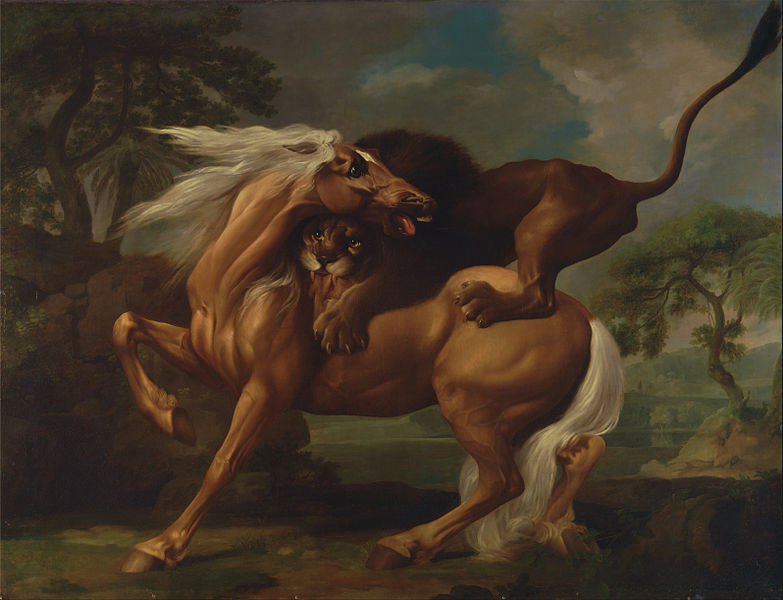
“A Lion Attacking a Horse” is a painting by English artist George Stubbs, completed in 1765. The painting depicts a ferocious lion attacking a terrified horse.
The painting is notable for its vivid and detailed portrayal of the violence and chaos of the animal kingdom.
Stubbs was known for his anatomical accuracy and his ability to capture the movement and energy of animals in motion. In this painting, he creates a sense of urgency and danger, with the lion’s claws and teeth bared and the horse struggling to escape its grasp.
Despite its graphic subject matter, the painting was admired for its technical skill and artistic merit, and became a popular work of art in the 18th century.
Today, it is part of the collection of the Yale Center for British Art in New Haven, Connecticut, and remains a celebrated example of Stubbs’ talent and mastery of animal painting.
4. The Dream – Henri Rousseau
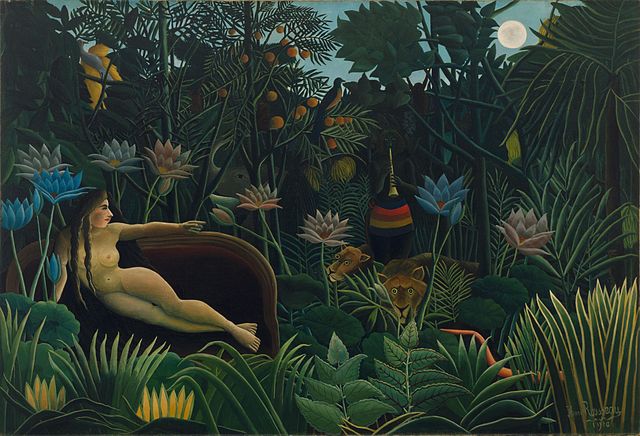
“The Dream” is a painting by French artist Henri Rousseau, completed in 1910. The painting depicts a naked woman reclining on a couch in a jungle setting, with a lion sitting beside her, gazing at the viewer.
The painting is notable for its dreamlike quality, with a sense of mystery and enchantment that draws the viewer into its world. The woman is shown with closed eyes, as if lost in a reverie or dream state, while the lion’s calm presence suggests a sense of security and protection.
Rousseau was a self-taught artist who created imaginative and fantastical scenes inspired by his own dreams and fantasies. “The Dream” is considered one of his most famous works, and a prime example of his unique style and artistic vision.
The painting has been interpreted in many different ways, with some seeing it as a celebration of primal instincts and animalistic desires, while others view it as a symbol of feminine power and freedom.
Today, the painting is part of the collection of the Museum of Modern Art in New York City, and remains a beloved and celebrated masterpiece of modern art. Its enduring popularity is a testament to its ability to capture the imagination and inspire wonder and fascination in viewers.
5. La Chasse aux lions – Eugène Delacroix
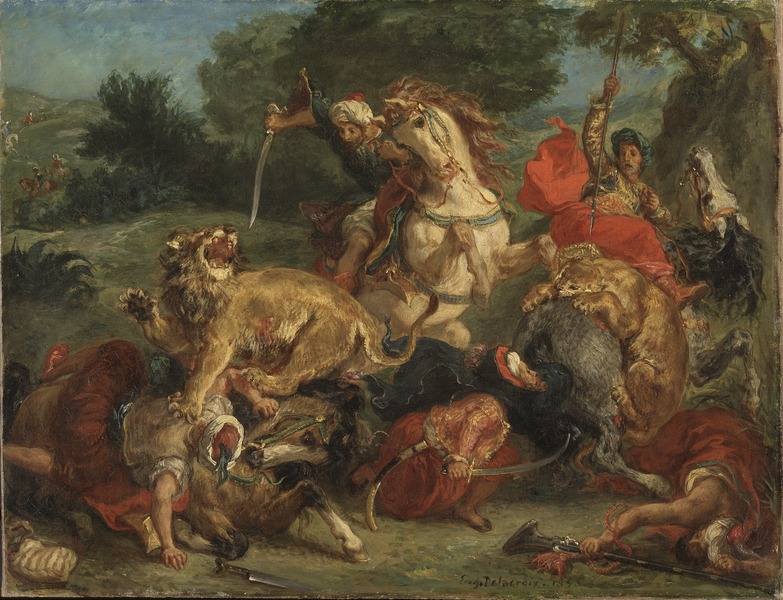
“La Chasse aux lions” (The Lion Hunt) is a painting by French artist Eugène Delacroix, completed in 1855. The painting depicts a hunting scene in North Africa, with a group of horsemen and their dogs pursuing a group of lions.
The painting is notable for its dynamic and dramatic composition, with the hunters and the lions arranged in a chaotic and frenzied scene. The use of vivid colors and bold brushstrokes adds to the sense of movement and energy, creating a sense of excitement and danger.
Delacroix was a leading figure of the Romantic movement in French art, known for his passionate and expressive style, and his interest in exotic and dramatic subject matter. “La Chasse aux lions” is considered one of his most impressive works, and a testament to his ability to capture the power and beauty of the natural world.
Today, the painting is part of the collection of the Musée d’Orsay in Paris, and remains a celebrated masterpiece of French Romanticism. Its enduring popularity is a testament to its ability to capture the imagination and inspire awe and admiration in viewers.
6. A Horse Frightened by a Lion – George Stubbs
7. Allegory of Prudence – Titian
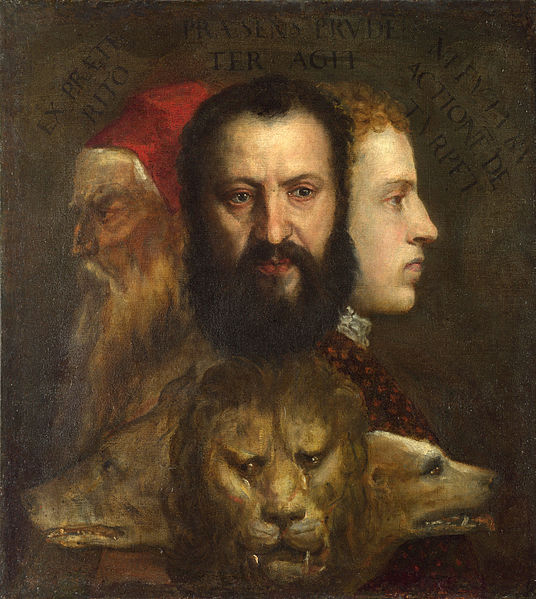
The Allegory of Prudence (about 1550–1565) is an oil-on-canvas painting by Titian and his assistants.
Three human heads, each facing a different direction, are depicted above three animal heads in the painting (from left to right, a wolf, a lion and a dog). It is located in London’s National Gallery.
The painting is typically seen as functioning on multiple levels. On the first level, the varying ages of the three human heads indicate the three eras of man (from left to right: old age, maturity, and youth), a subject that Titian had painted in his The Three Ages of Man fifty years previously.
The multiple directions in which they face represent a second, broader view of time as having a past, a present, and a future. This motif is echoed in the animal heads: a three-headed animal (wolf, lion, dog) symbolizes the passing of time (past, present, future)
8. Resting Lion – Leroy Neiman
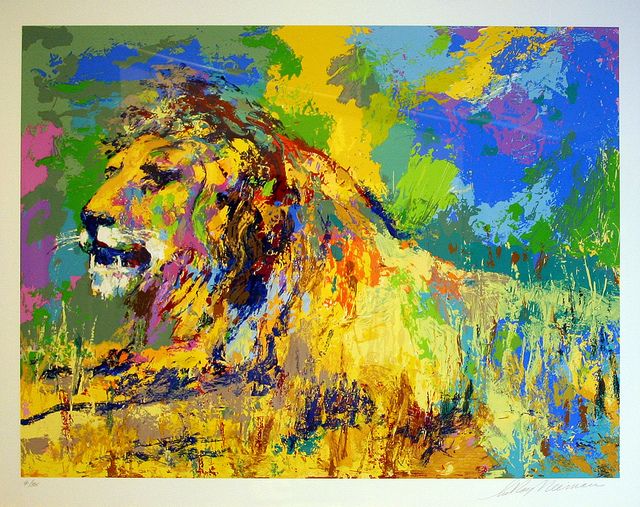
“Resting Lion” is a painting by American artist LeRoy Neiman, completed in 1992. The painting depicts a majestic lion, lying in repose, with a sense of calm and serenity.
The painting is notable for its vibrant and bold colors, and its use of loose and expressive brushstrokes. Neiman was known for his energetic and dynamic style, which often focused on the world of sports and entertainment. “Resting Lion” is a departure from his usual subject matter, but still showcases his mastery of color and composition.
The lion in the painting is depicted with a sense of regality and power, but also with a sense of vulnerability and tranquility. Neiman’s use of bold colors and loose brushstrokes adds to the sense of motion and energy, creating a sense of life and vitality in the painting.
Today, the painting is part of the collection of the LeRoy Neiman Foundation, and remains a celebrated example of Neiman’s talent and skill as an artist. Its enduring popularity is a testament to its ability to capture the beauty and majesty of the animal kingdom, and to inspire a sense of awe and wonder in viewers.
9. The Lion of St Mark 1516 – Vittore Carpaccio
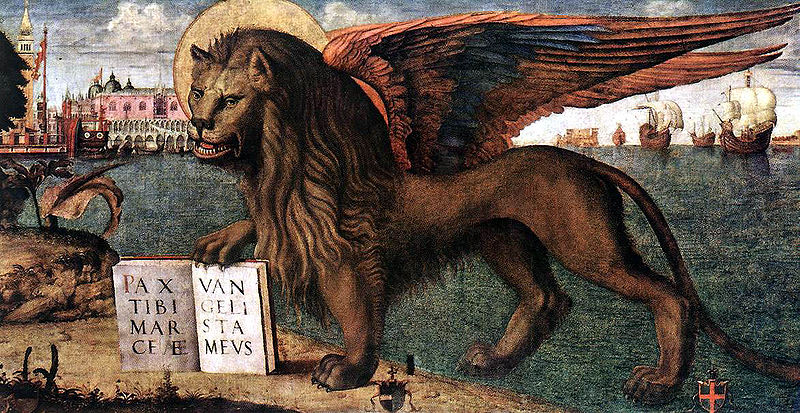
“The Lion of St. Mark” is a painting by Italian Renaissance artist Vittore Carpaccio, completed in 1516. The painting depicts the winged lion, a symbol of the city of Venice and the patron saint of the city, St. Mark.
The lion is shown standing on a book, with its paw resting on the open pages, and its wings spread wide. The background is a view of Venice, with the iconic St. Mark’s Basilica and Campanile visible in the distance.
The painting is notable for its attention to detail and its vibrant colors, which capture the beauty and grandeur of the city of Venice. Carpaccio was known for his skill as a painter of historical and religious subjects, and “The Lion of St. Mark” is considered one of his most impressive works.
Today, the painting is part of the collection of the Scuola Grande di San Giovanni Evangelista in Venice, and remains a beloved and celebrated masterpiece of Renaissance art. Its enduring popularity is a testament to its ability to capture the spirit and identity of the city of Venice, and to inspire a sense of pride and admiration in viewers.
10. Lion (The Look Out) – Rosa Bonheur
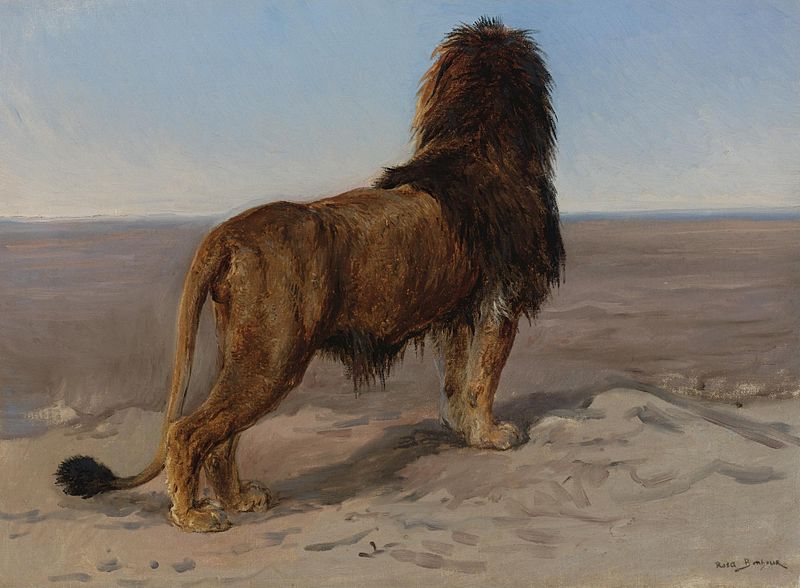
“Lion (The Look Out)” is a painting by French artist Rosa Bonheur, completed in 1888. The painting depicts a male lion, standing watchful and alert, with a sense of strength and dignity.
The painting is notable for its realism and its attention to detail, with the lion depicted with a sense of anatomical accuracy and a true-to-life rendering of its fur and musculature.
Bonheur was known for her skill as an animal painter, and “Lion (The Look Out)” is considered one of her most impressive works.
The lion in the painting is shown with a sense of calm and self-assuredness, as if aware of its own power and majesty. The use of light and shadow adds to the sense of depth and dimensionality, creating a sense of presence and immediacy.
Today, the painting remains a celebrated masterpiece of animal painting. Its enduring popularity is a testament to its ability to capture the beauty and spirit of the animal kingdom, and to inspire a sense of awe and admiration in viewers.

